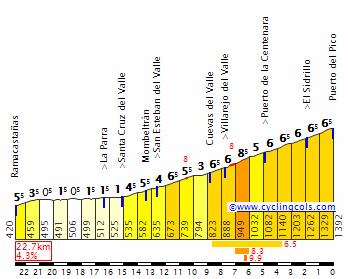Re: Re:
I don't mind the final slog stages, my circumstances have changed so all i ever get to watch is the last 30 or so mins of GT stages, therefore i miss less relevant action in the Vuelta than the other 2.
Of all the stages, this is the one you are criticising?Ataraxus said:Hugo Koblet said:That looks like one fun stage!Lequack said:Stage 20, the last one before procession to Madrid:

The problem with this stage is that Col de la Galina is the hardest climb of the day.
What they should have done is go all the way up to la galina (1912m), take the descent into Sant Julia de Loria and finish in Andorra.
You add only 25 km to the stage and GC action in the last 30-40 km is almost guaranteed.
I don't mind the final slog stages, my circumstances have changed so all i ever get to watch is the last 30 or so mins of GT stages, therefore i miss less relevant action in the Vuelta than the other 2.








